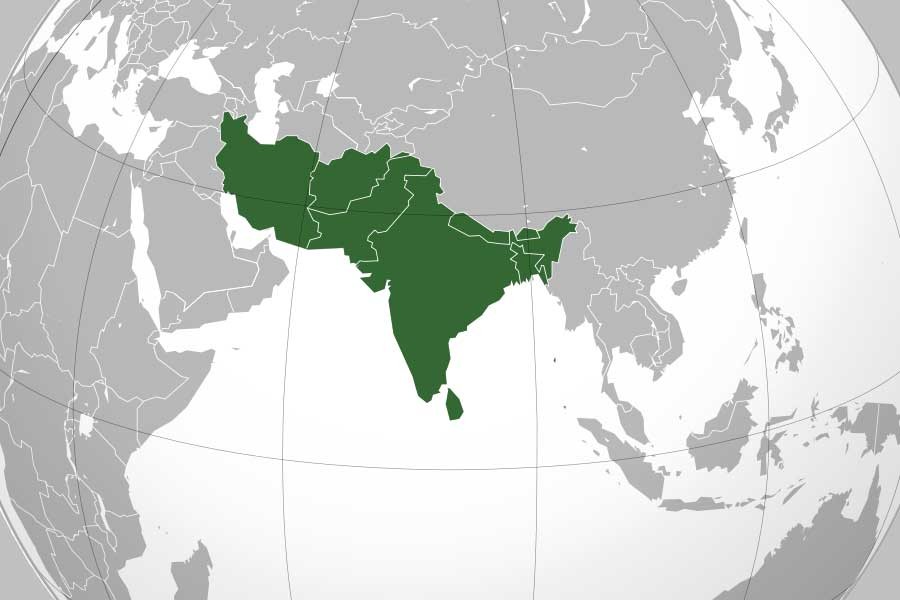Since the mid-1980s, durable reforms coupled with prudent macroeconomic management have brought steady progress to the South Asia region, making it one of the world's fastest growing regions. Real GDP (gross domestic product) growth has steadily increased from an average of about 3.0 per cent in the 1970s to 7.0 per cent over the last decade. Although growth trajectories varied across countries, reforms supported strong per capita income growth in the region, lifting over 200 million people out of poverty in the last three decades. In Bangladesh, important waves of reforms began in earnest in the early 1990s, focused on macroeconomic stabilisation, financial liberalisation, and increasing the role of the private sector. Today, South Asia accounts for one-fifth of the world's population and contributes to over 15 per cent of global growth.
A newly released paper by the IMF's Asia and Pacific Department finds that South Asia is poised to play an even bigger role in the global economy going forward, in both relative and absolute terms. India has overtaken China as the fastest growing large economy and South Asia's contribution to global growth is set to increase, while more mature economies decelerate. Greater economic diversification, with an expansion of the service sector, improvements in education, and a still sizable demographic dividend are among the key elements underpinning this performance. Bangladesh has notably benefited from the transition from an agriculture-based to a manufacturing economy, spurred by the rapid expansion of exports from the ready-made garment industry.
Based on demographic trends, more than 150 million people in the region are expected to enter the labour market by 2030-and in Bangladesh, the demographic dividend is projected to peak around 2035. This young and large workforce can be South Asia's strength, if supported by a successful high-quality and job-rich growth strategy. Amid a changing global economic landscape, South Asia will need to leverage on all sectors of the economy in a balanced way, supporting improvements in agricultural productivity and a sustainable expansion of manufacturing, while promoting higher-skill services, to achieve this goal.
To build on the strong performance to date and allow for growth to take off in earnest, the countries in the region will need to step up their policy and reform agenda. South Asian economies can further open up to trade and foreign direct investment (FDI), improve governance and infrastructure, and foster financial development to enable more efficient allocation of resources to the private sector and reduce the still significant state footprint in the economy. In Bangladesh, sustained efforts will notably be required to further diversify the economy and attract foreign investment as the country nears LDC graduation and moves towards higher middle-income status. The region will also need to prepare its workforce for the challenges of the twenty-first century to be able to fully reap the benefits of its demographic dividend. Investing in human capital and addressing the large informal sector-taking significant steps to strengthen women's economic empowerment and labour force participation and support the youth-would bring sizable economic gains to the region. Bangladesh's efforts should particularly centre on improving access to secondary and vocational education, increasing the participation of women in the labour force, and enhancing the coverage and effectiveness of social protection mechanisms.
Sustained structural reform efforts, including successfully harnessing its young and large workforce alongside substantial trade and FDI liberalisation, could bring India's real GDP per capita to nearly 50 per cent of that of the United States by 2040, with important spillovers to the region. Under a full liberalisation scenario, South Asia could contribute about a third of global growth by 2040, with real GDP growth surpassing 6.5 per cent, compared to nearly 6.0 per cent under the current baseline and 5.0 per cent in a downside scenario where the benefits of the demographic dividend cannot be secured.
The region's robust economic performance and recent elections in most South Asian economies offer a propitious window of opportunity to accelerate this reform agenda. Cross-country evidence in the literature finds a higher likelihood of achieving more reforms, at lower cost, in the first two years of a government office. A frontloaded reform programme is also more likely to succeed as it provides more time to see the reforms bear fruit. In Bangladesh, now would be an opportune time to initiate ambitious reforms to strengthen the stability of the financial system and mobilise higher domestic revenue for social spending and infrastructure investment.
Clear communication on the benefits of the reforms and prioritisation based on their expected macrostructural impact are key to building reform momentum. Stronger social safety nets are especially important to supporting the most difficult structural reforms, notably to labour markets, minimising their distributional impact on the most vulnerable segments of the population, and promoting strong and inclusive growth. To ensure the region's growth path remains as strong as sustainable, new policies and initiatives need to remain mindful of fiscal, financial, and environmental risks.
Ragnar Gudmundsson is Resident Representative of the International Monetary Fund (IMF), Bangladesh. [email protected]


